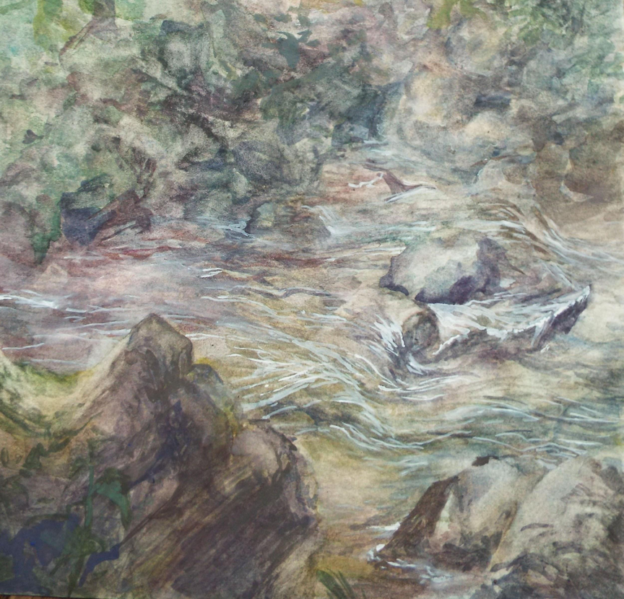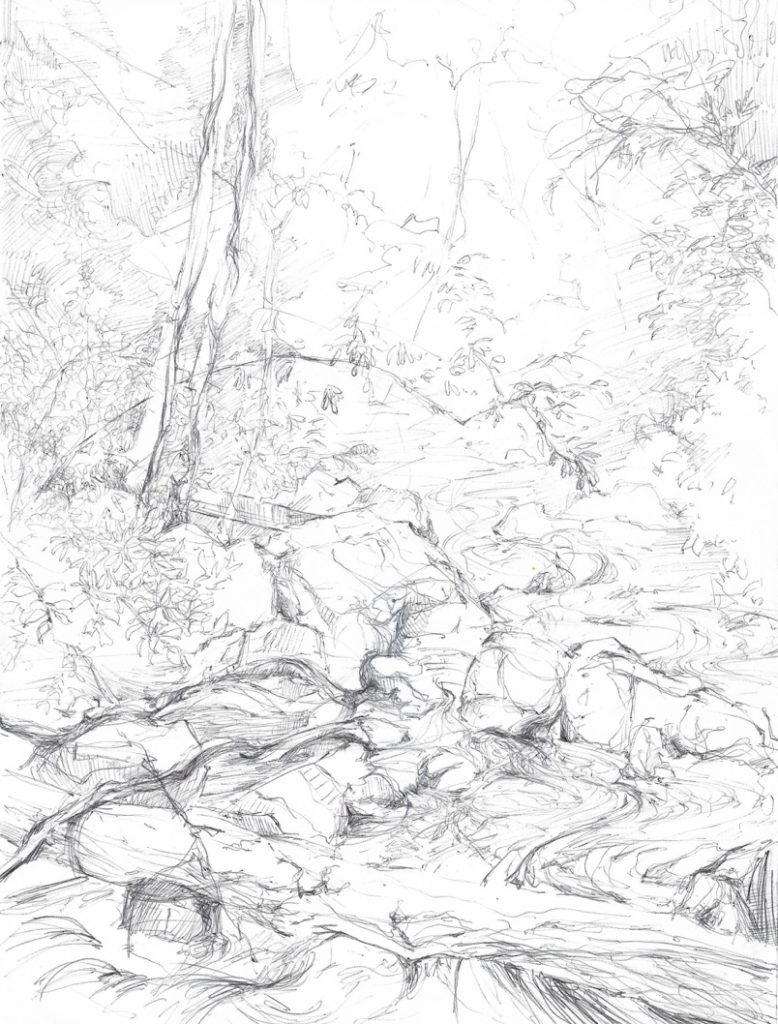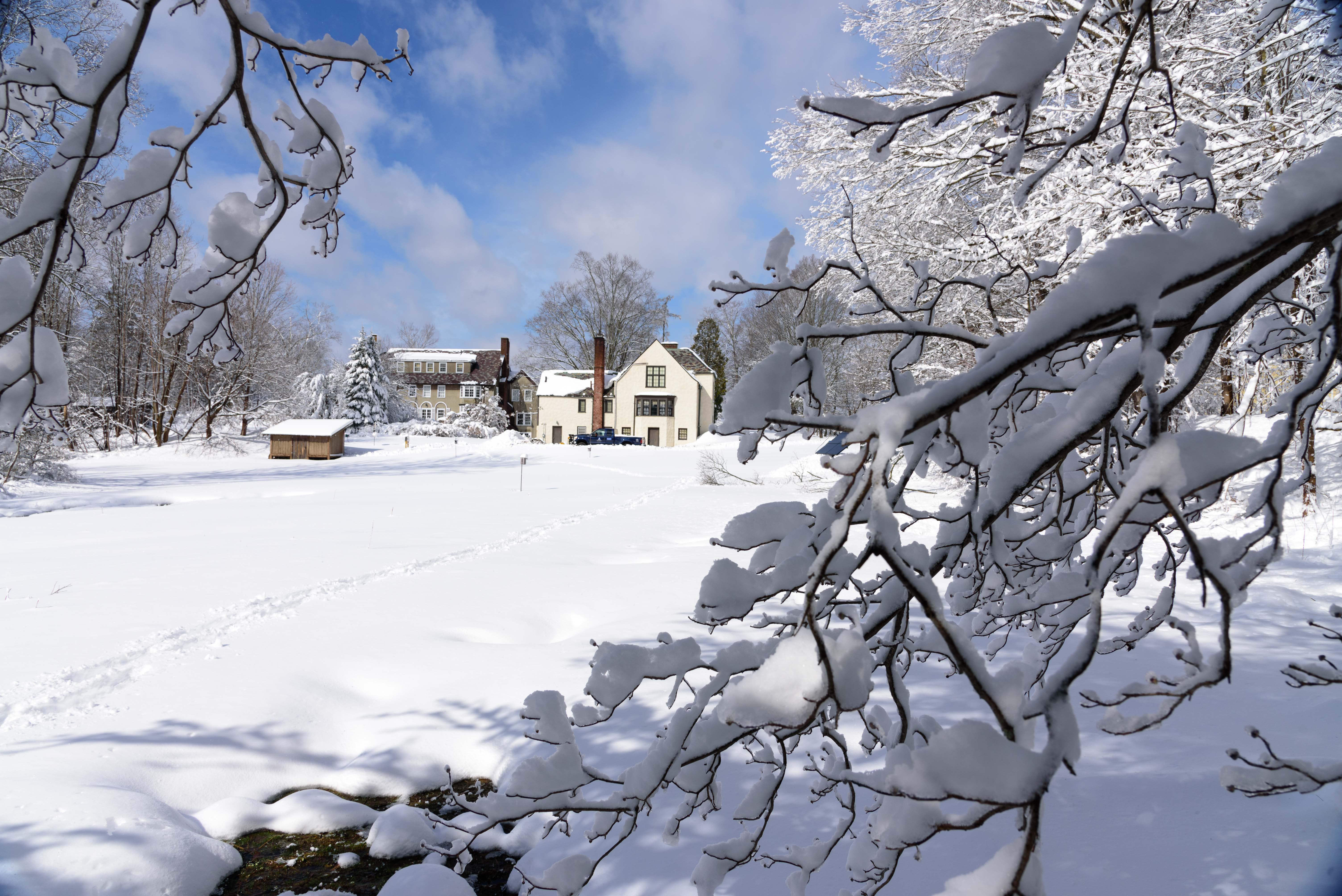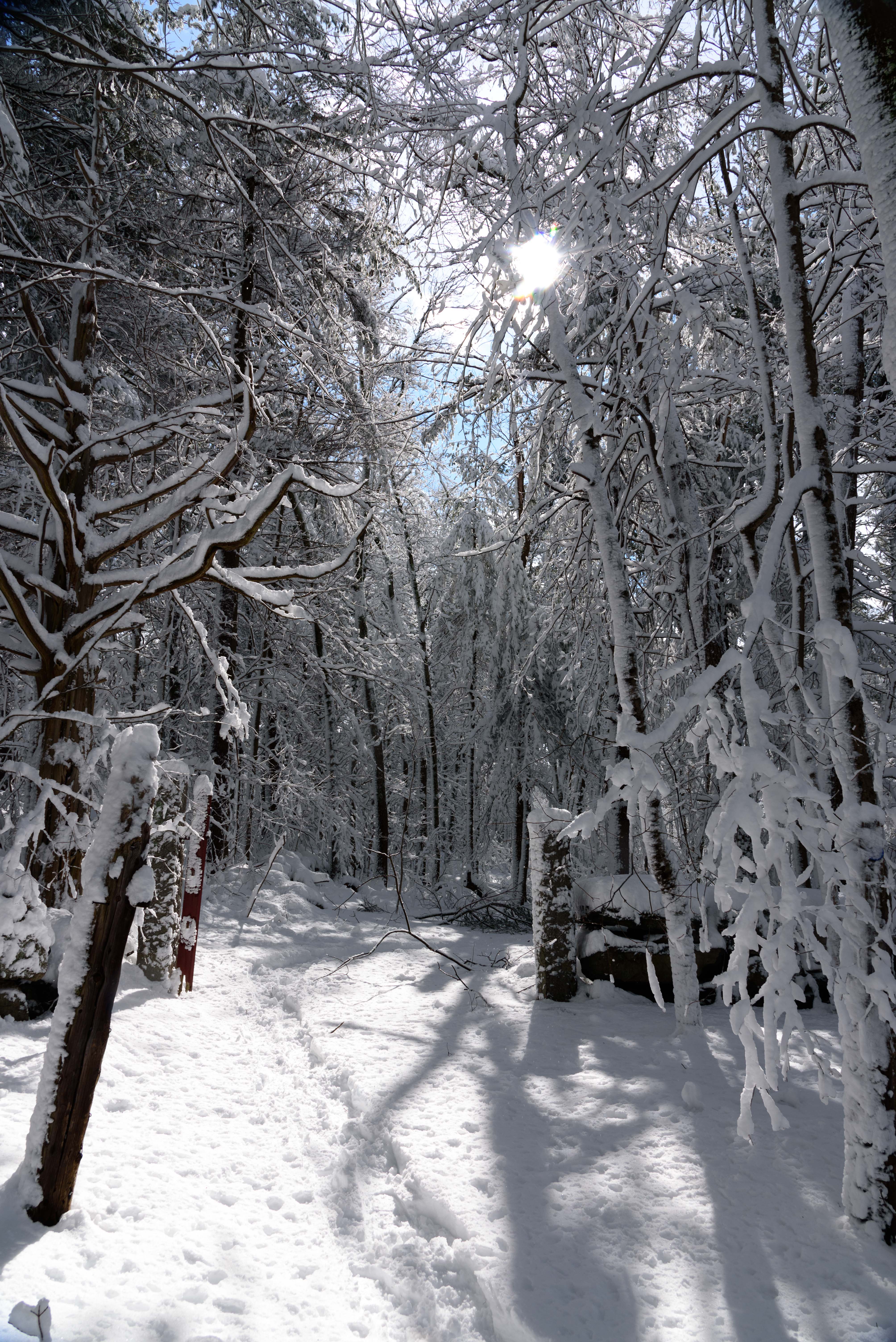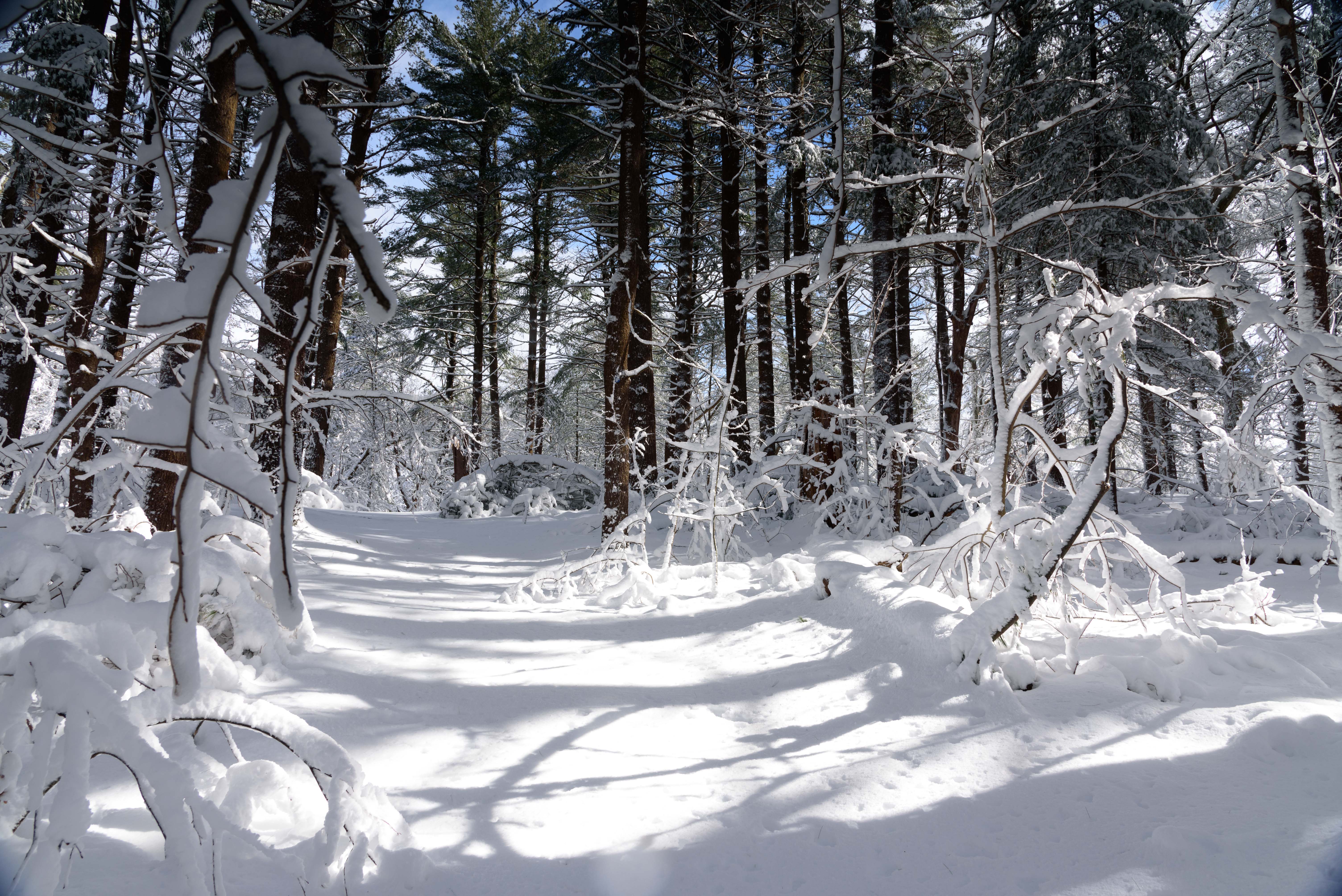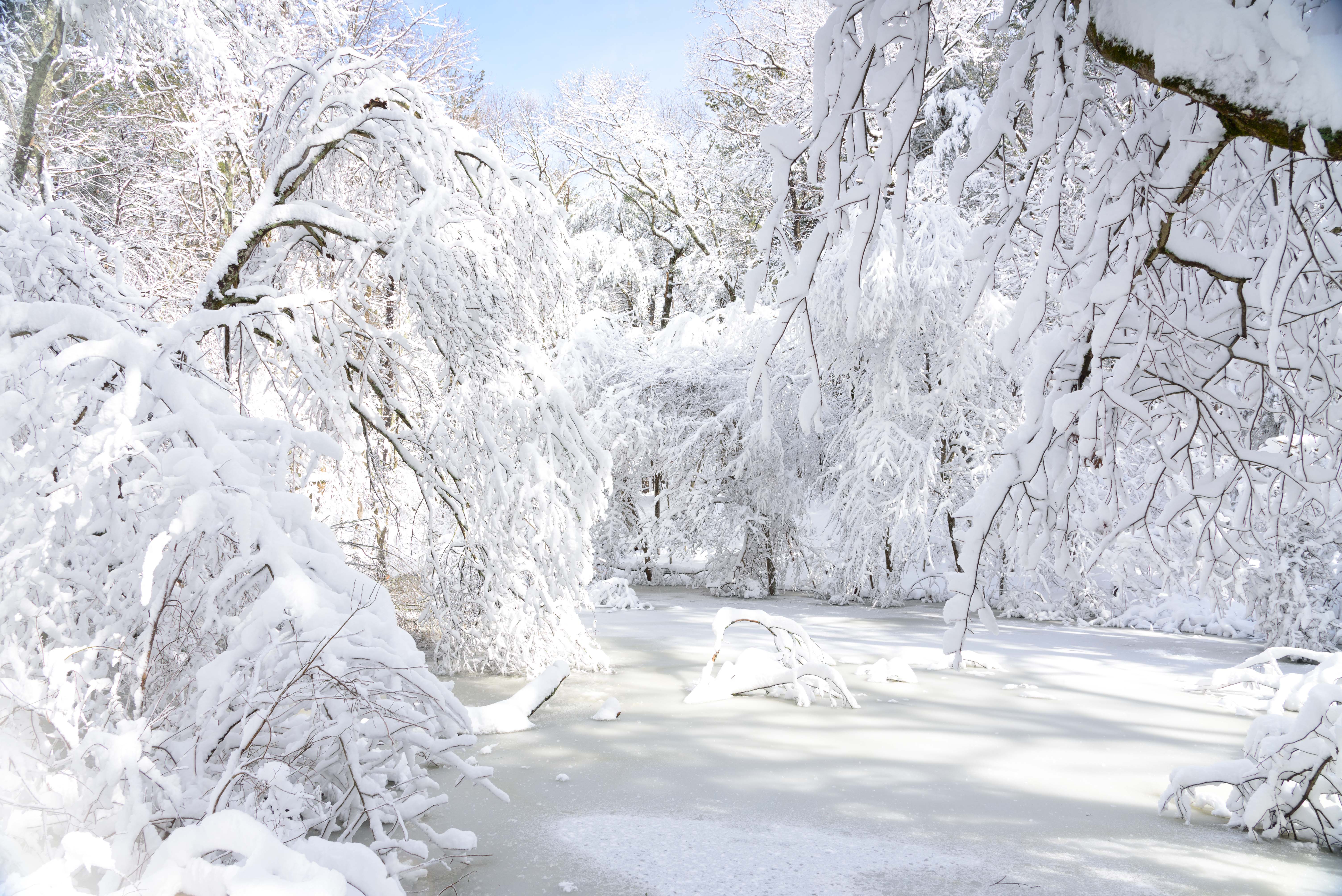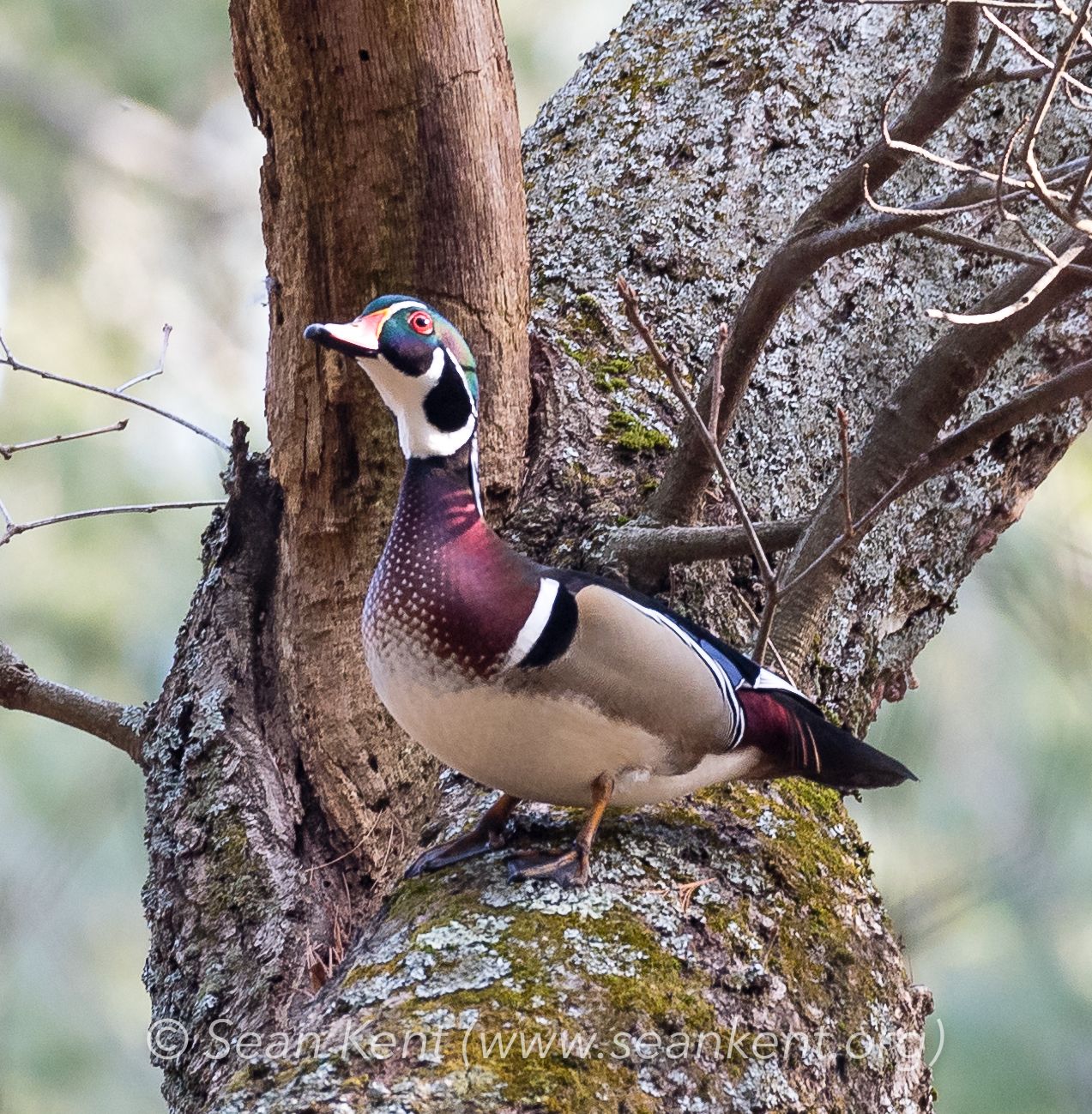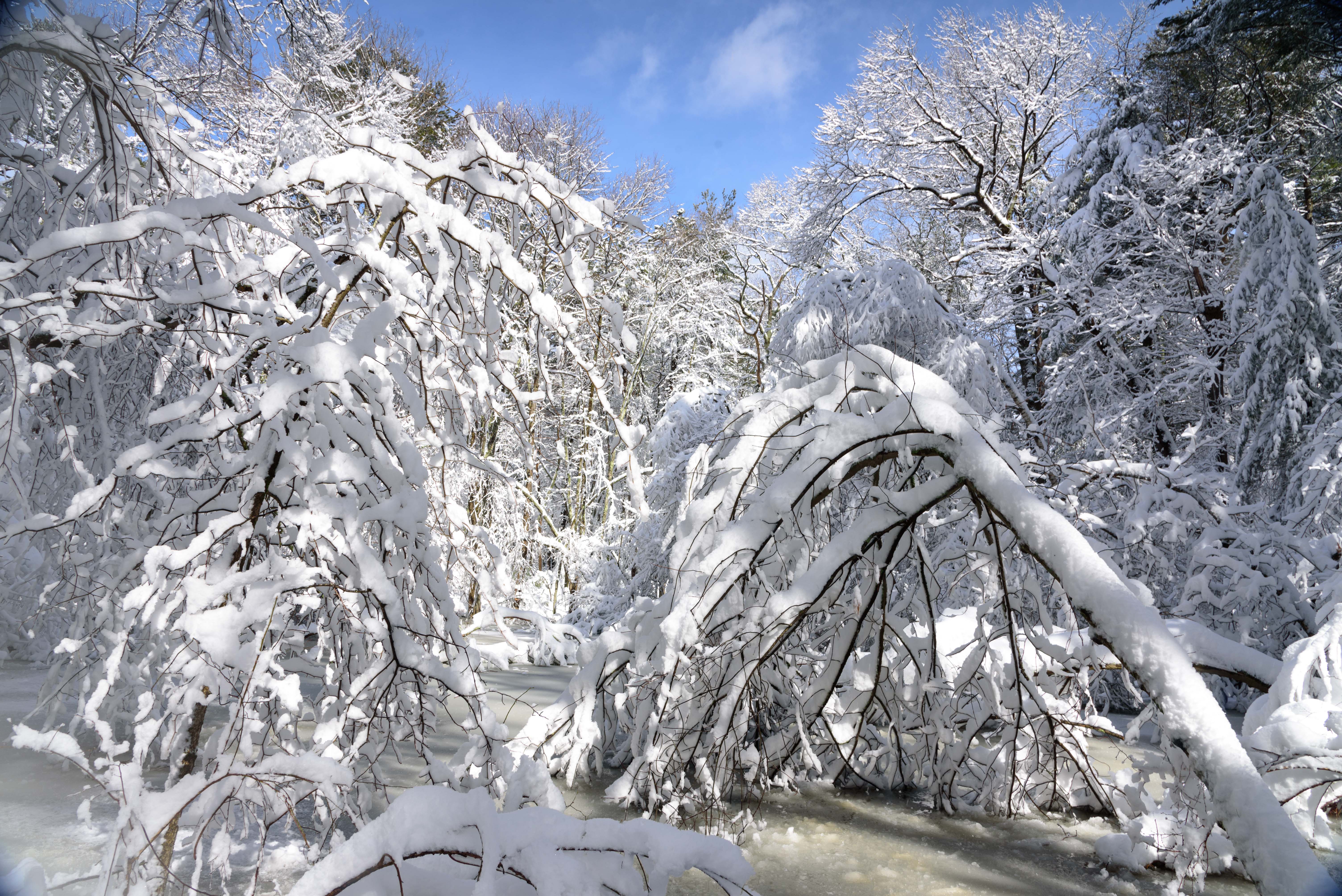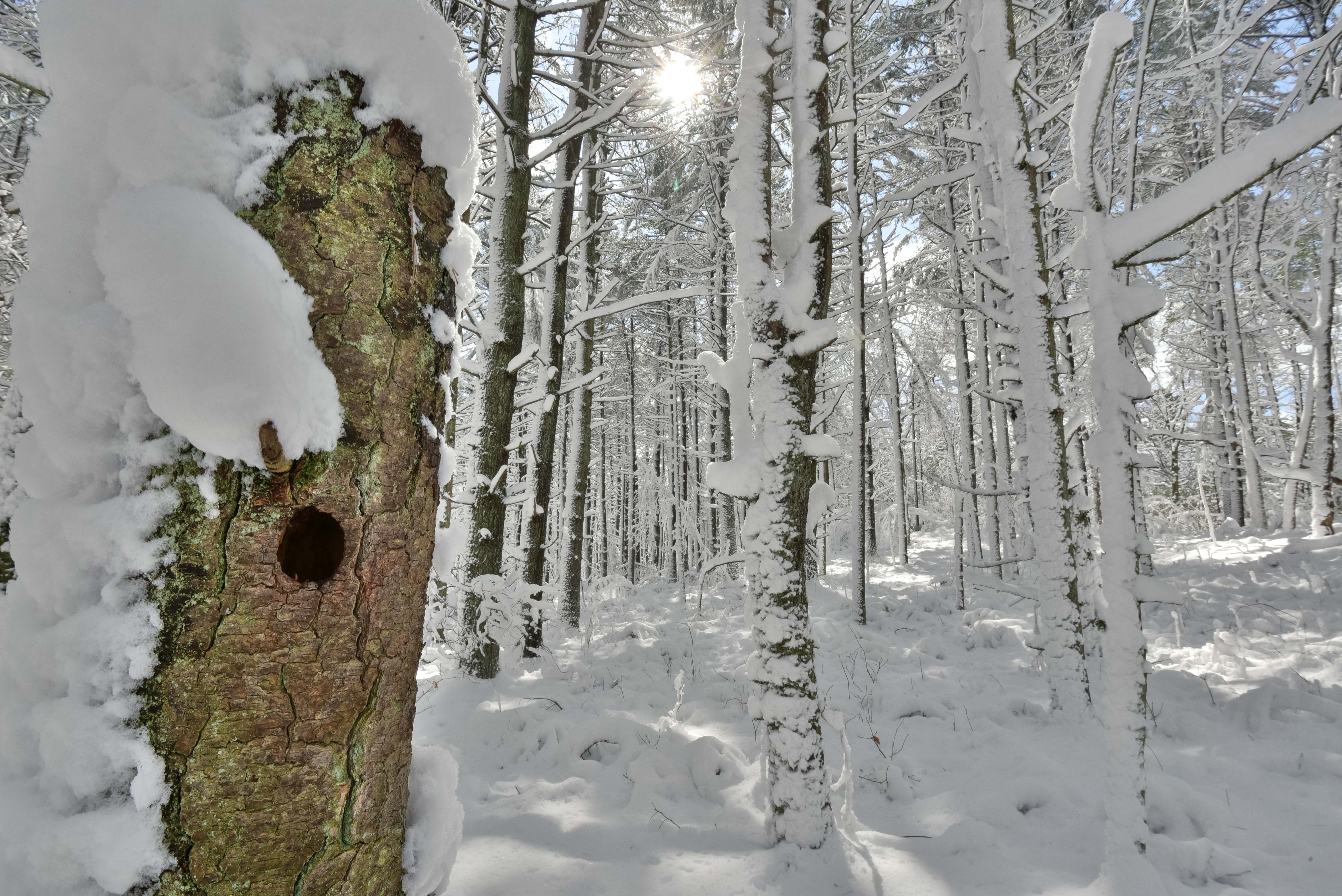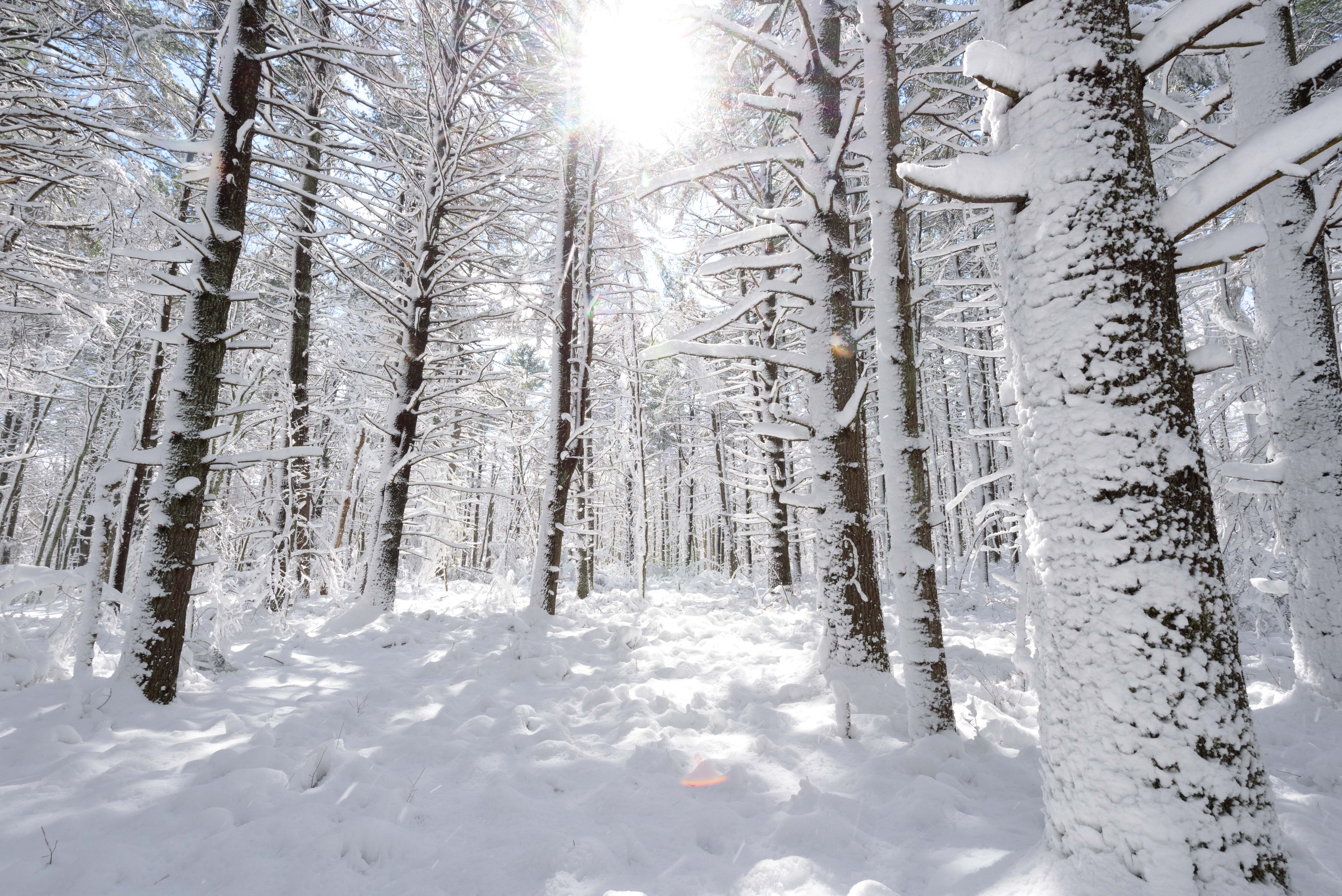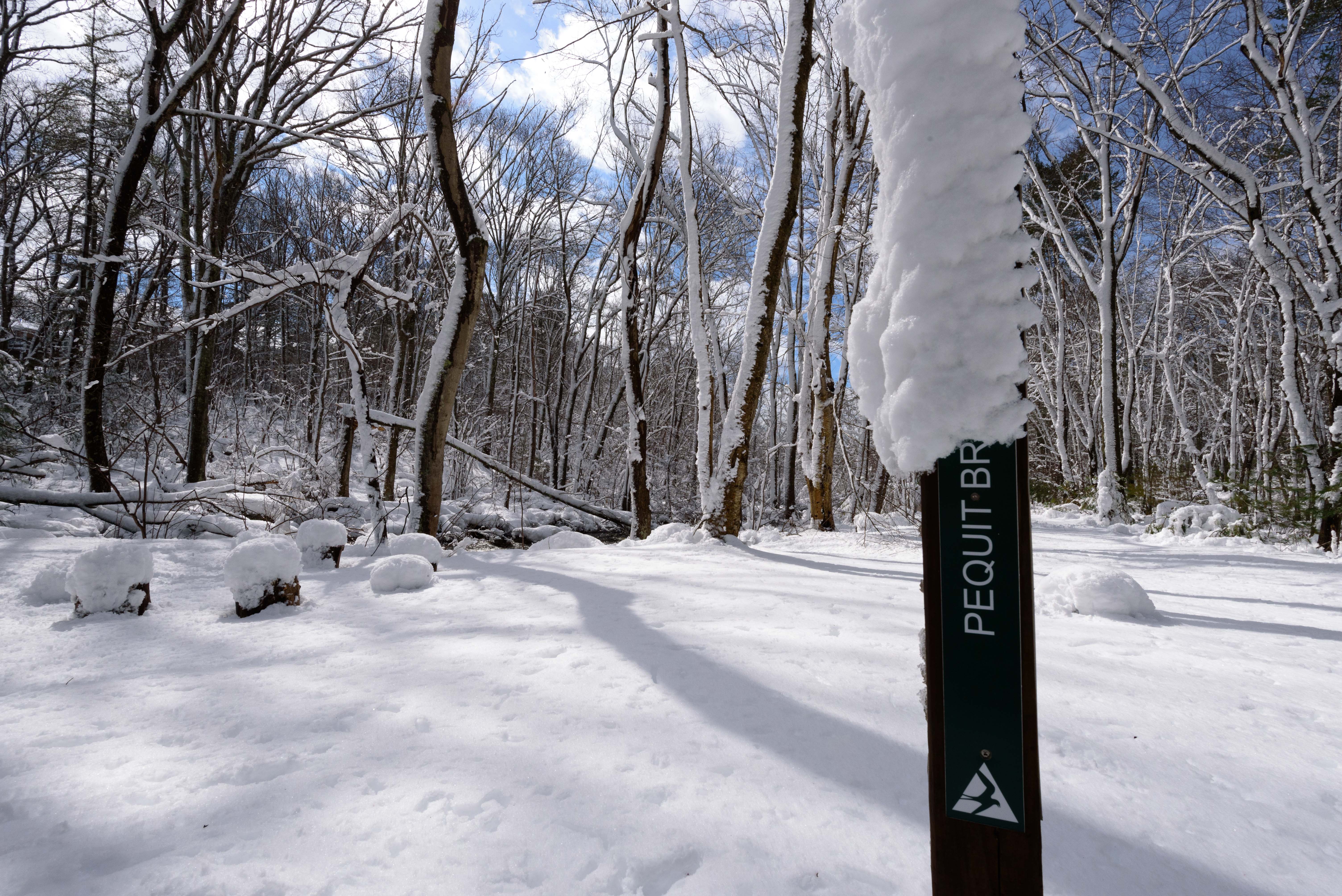SUPPORT OUR WORK and Donate to the Museum of American Bird Art
In my first post about the Pequit Brook, I focused on drawing the water, rocks, and landscape that exists in the brook area. The drawings in this second post focus on the smaller things that define the brook’s environment, like the plants and fungi that grow there. When trying to capture the key elements of a location, I think that it is important to keep shifting scale, going from wide landscapes to small details.

Some of the mushrooms growing along the Pequit Brook
You will notice many mushrooms popping up alongside the trails after it has rained. They come in red, orange, yellow, white, black, tan, and brown! I like the shapes that are created when pieces are broken off, like the mushrooms on the right in the drawing above.

Photo of an interesting texture on a black mushroom
Pictured below is a large group of Indian Pipe Plants, or Ghost Plants. They are often mistaken for fungi because they aren’t green. This is because they don’t have any chlorophyll. Instead of getting energy from the sun, like most plants, they steal nutrients from the roots of trees. In Massachusetts, the Ghost Plant is white or grayish white, sometimes with pink flowers.

Ghost Plants grow in moist, dark areas, and the biggest patch of them was at the end of the Pequit Brook Trail.

The shape of the stalk and flower reminds me of seahorses


The drawing above is of the Muskratweed plant. It grows in big stalks that are 3-8 feet tall. When it leans over into the brook, it becomes part of the whole landscape and the flowers add a pop of pinkish-white color to the scene. In this drawing, you can see the small details, like the clusters of fluffy flowers.

The plants and mushrooms that I notice by the side of the Pequit Brook are always changing; some begin to die and new ones appear. This selection of things is a good representation of one moment during the summer.
My name is Maris Van Vlack, and I will be blogging for the summer of 2020! I am a rising sophomore at the Rhode Island School of Design, with a major in Textiles and a concentration in Drawing. I used to take homeschool classes at the Museum of American Bird Art and have had my artwork exhibiting in their Taking Flight Exhibit for young bird artists.
I am especially interested in working with unusual materials in my work, and am inspired by plants, animals, and the patterns found in nature. This summer, I will be creating a guide for the MABA trails with sketches and paintings. I will be recording and writing about my observations, and sharing them through these blog posts. Hopefully this will be an educational and inspiring resource, and will motivate you to sketch what you see when you visit MABA this summer!



